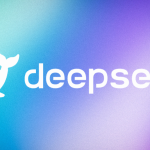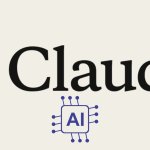The term ‘deep tech’, like ‘innovation,’ ‘disruption,’ and ‘open relationship,’ means different things to different people. If we go to Wikipedia, we’ll find the definition as “technology solutions based on significant scientific or engineering challenges” – but does that really cover it? ‘a broad term for technologies that are not focused on end-user services, such as artificial intelligence, robotics, blockchain, advanced material science, photonics and electronics, biotech, and quantum computing.’ Not incorrect, but a pretty broad net.
Whatever definition you favor, the general consensus is that the development of science and engineering-driven “deep tech” necessitates lengthy research and development processes, significant capital investments prior to commercialization, and a barrier to reproduction (which means deep tech companies frequently create/hold valuable intellectual property).

From the 1800s steam engines to today’s artificial intelligence, biotechnology, and autonomous vehicles, technology has undergone revolutions. The concept of creating the next industrial revolution is appealing; entrepreneurs want to create it, investors want to be a part of it, and governments want to build ecosystems that support it. In this article, we will look at what distinguishes low-tech, high-tech, and deep-tech innovations.
Low-tech
Low-tech is something that anyone can create and produce. Look around you; the most insignificant but useful applications are low-tech. This could include anything from a simple mechanical mechanism to converting an existing business, such as daycare, errand services, bakery, florist, laundry service, and food trucks, to a digital platform.
The technology underlying low-tech is simple and easily replicable. Low-tech innovation is inexpensive and frequently used for practical purposes. Despite the fact that low-tech contributes a significant portion of global GDP and job opportunities, it is frequently underestimated and underfunded.
Low-tech is a true ecological transition accelerator, based on simple technologies with low environmental impact. This sustainable innovation enables us to explore new ways, complementary or even alternatives to high-tech products, and discover a new way of life that can also contribute significantly to addressing the problem of climate change.

Low-tech refers to a set of simple and easily accessible techniques, objects, services, systems, practices, lifestyles, and ways of thinking.
Low technology is defined by three fundamental principles:
- Meeting basic needs such as energy, food, water access, or health;
- Accessibility: be affordable and accessible to as many people as possible.
- Sustainability is defined as minimizing the environmental, social, and societal impact at each stage of the life cycle.
High Technology
High-tech (or Hi-Tech) is a new technology with advanced features and capabilities that typically focuses on specific business and industry problems. High-tech reinvents core processes, business models, and societal behavior on existing services, products, and lifestyles.
High-tech development takes less time to reach the market than deep-tech development, and it focuses on capturing market shares, making it a good venture capitalist investment.
Plaid — software powering fin-tech apps such as Venmo and Coinbase, Bumble — a social app for dating and friend-finding, Bird — scooter startups that differ in growth strategy, Door Dash, DahMakan — on-demand food delivery apps, Uber, Grab, Lyft — crowd-sourcing business model on the existing transportation system — are examples of high-tech startups.
Deep Tech
Deep-tech seeks to solve humanity’s problems by addressing societal and environmental concerns. Deep-tech is game-changing and disruptive, but it takes a long time to reach the market. It also necessitates significant capital investments and works only if there is technical and business expertise to support the significant amount of research and development required. Deep-tech companies are difficult to replicate, and their patented technology is typically commercialized.
High-tech firms are investing in and reshaping their innovation strategies to focus on deep-tech. Google Life Sciences, for example, Google, Facebook, Amazon, IBM, and Microsoft in Artificial Intelligence, and Uber, Apple, and Google in driver-less car services.
Investors and corporate VCs have begun to move into deep-tech, with total biotech funding reaching USD 7.9 billion in 2016, and similar figures in 2017.
Deep Tech is a subset of technology with broader objectives.
The rise of big data companies like Google and Amazon has shifted attention to the deep tech industry. Deep tech is a subset of the technology sector, but unlike the majority of the rest of the sector, deep tech seeks to achieve larger goals.

Deep tech is distinguished by its desire to address larger societal issues and opportunities, such as climate change, food scarcity, and alternative energy. This means that venture capitalists are investing in a future solution rather than an end product for a user. As a result, deep tech has become and will continue to become more socially relevant. Deep tech solutions may not only be beneficial but also necessary, especially in light of looming issues such as climate change.
Deep tech is the “New Black.”
Most deep tech products and solutions are created by combining software and hardware. Deep tech is beginning to expand our knowledge and resources, from AI healthcare diagnoses to VR education.
The “staleness” of software development is the reason deep tech is becoming such a hot topic. Because software development, such as Microsoft, peaked 10-30 years ago, investing in it has become a somewhat “old hat” for venture capitalists. Deep tech has become much more exciting as it combines software and hardware, opening up new opportunities for investors. Despite the fact that some deep tech (such as VR) has been around for decades, the sector is growing significantly in terms of funding and popularity.
Deep Technology Requires Diverse Skills
Deep tech requires individuals with more technical skills because it is much more niche. These employees typically have an engineering or computer science background rather than a business degree. Because of increased technical expertise, the hiring pool for deep tech businesses has shrunk significantly, and in some cases has become constraining. Many quantum technology companies, for example, are having difficulty hiring employees due to the required skills.
Deep Tech has a distinct timetable and business model.
Deep tech has a much longer timeline because it is more focused on solutions to large problems rather than end-products. Most deep tech companies will need a different business model, one that considers which product markets to target. Because most deep tech companies cannot pivot as easily as other tech companies, a longer and more detailed business plan is required to produce successful margins.
Home automation systems, such as video surveillance for home security, tracking devices, and other smart devices, have grown in popularity and will continue to do so in the near future.
Motion sensors/detectors, in conjunction with security cameras, detect break-ins and automatically notify emergency services. This does not necessitate human supervision.
The future of home automation is to make all of your daily chores easier by using simple voice commands.
AI has progressed to the point where these systems can recognize and distinguish between your friends, family, and visitors using a facial recognition feature. Furthermore, by controlling automated lighting sensors, the new technology will manage your energy consumption and help you reduce your carbon footprint.
To summarise, the deep technology revolution is gathering momentum and will soon spread to all sectors, benefiting from its enabling capabilities.
What Do These Distinctions Actually Mean?
These distinctions have significant implications for both investors and consumers of technology. For investors, a deep tech business requires much more capital upfront and has a longer time to ROI than other tech companies. Some deep tech (such as AI and VR) is already being commercialized for consumers, but major advancements are unlikely to be accepted until ten or twenty years from now. Deep tech is just getting started for the entire society. Deep Technology is transforming the world. There is now a global competition for hard-core scientific and research talent in AI and life sciences.
Countries wishing to develop their own Deep Tech sectors must make a concerted effort to improve the ecosystem. A larger Deep Tech idea pipeline and more funds are required.
The timing is ideal. Hard science and engineering are held in high regard for their ability to solve large societal problems. Opportunities abound and are becoming more accessible. It is now time to seize those opportunities.
A growing number of venture capital investments are concentrating on deep channel technologies such as AI, blockchain, and robotics. Companies that put their pioneering vision into action to leverage the industry’s potential to address major issues such as climate change. However, there is still plenty of room for advancement in this field due to the wide range of issues that deep technology can address.







